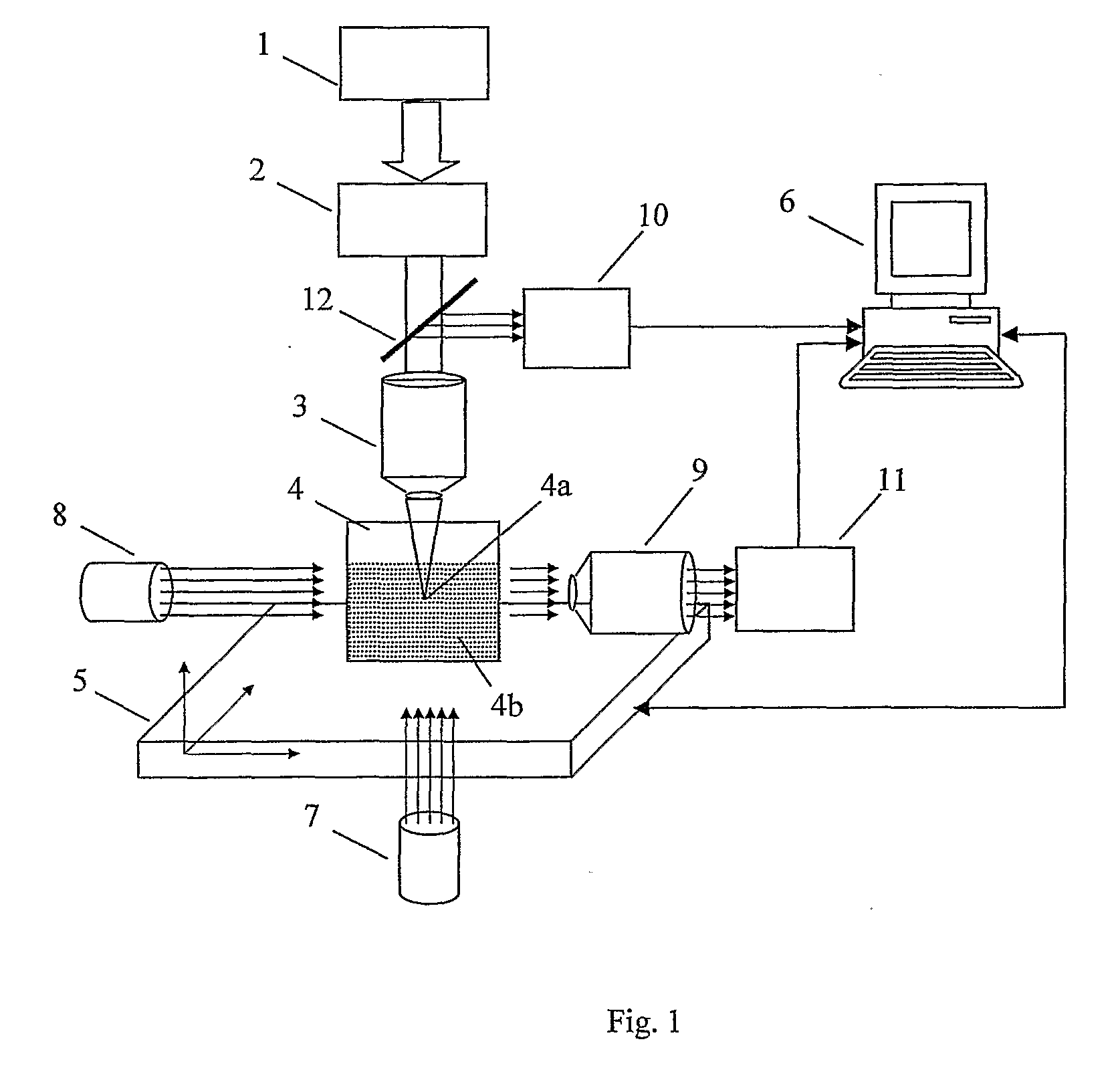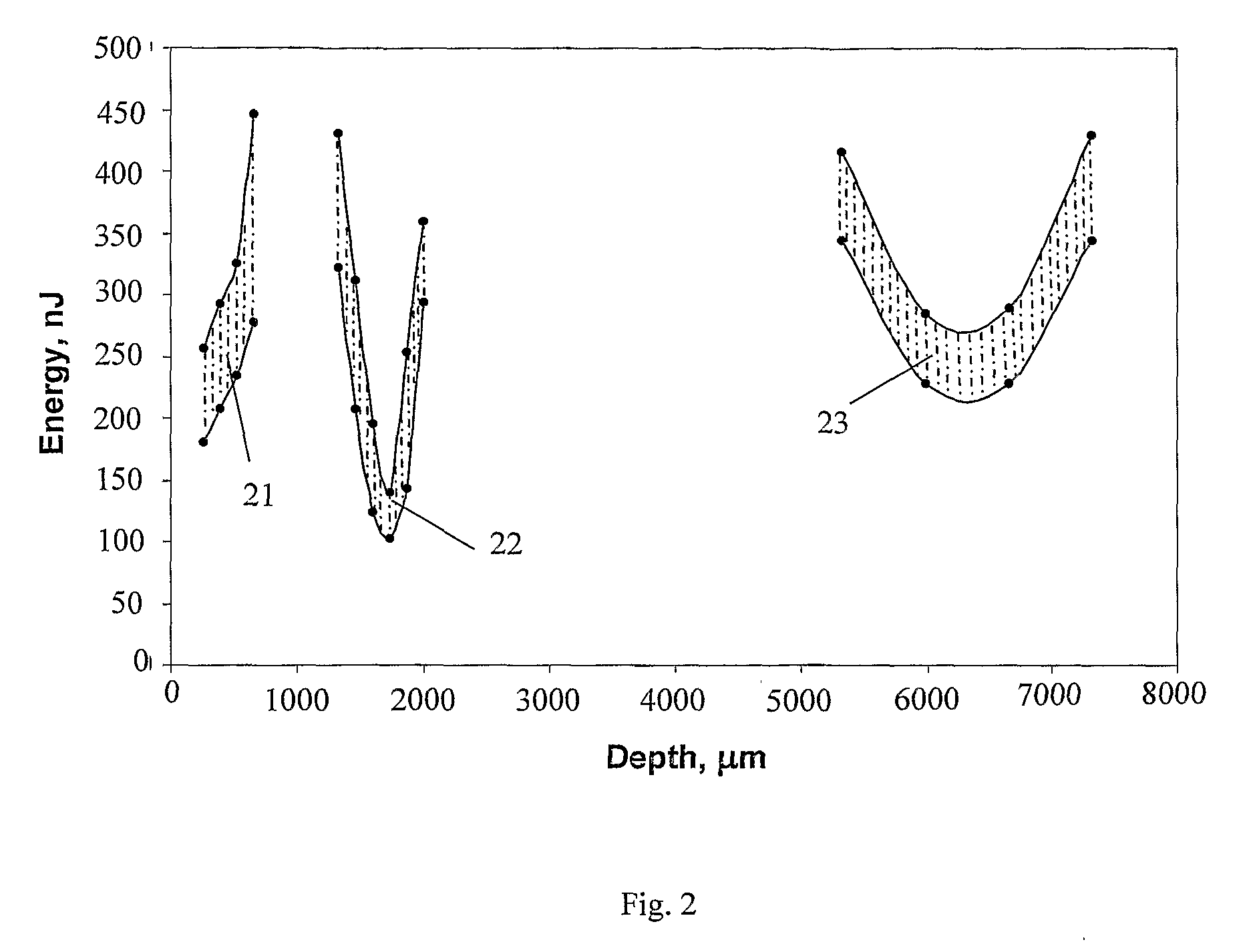Method for creating, trapping and manipulating a gas bubble in liquid
a gas bubble and liquid technology, applied in the field of optical trapping, can solve the problems of gas bubble generation and emission from the focal point area, the limitation of known optical tweezers, and the inability to trap gas bubbles in liquid
- Summary
- Abstract
- Description
- Claims
- Application Information
AI Technical Summary
Benefits of technology
Problems solved by technology
Method used
Image
Examples
example 1
[0056]Laser pulses of 200 fs width and wavelength of 800 nm (1, FIG. 1) were directed through a variable attenuator (2) and were focused in distilled water by an dry objective (3) with a numerical aperture 0.55. A cuvette (4) with water (4b) was moved relative to the focal point (4a) of the objective with the help of a three-axis open frame positioning system (5), controlled by a computer (6). The setup had two vision systems working along and perpendicular to the direction of laser beam. Each vision system had an illumination source (7, 8), an objective (3, 9) and a CCD camera (10, 11). Observation along the laser beam was performed through the same objective (NA=0.55, compensation depth 6.3 mm), as the initiating breakdown laser radiation using a dichroic mirror (12). In the vision system perpendicular to the laser beam the objective (9) with NA=0.3 was used.
[0057]As it was mentioned above, typically initiation of breakdown in water by high repetition pulses is followed by residua...
example 2
[0059]200 fs laser pulses of Ti-Sapphire laser with pulse energy of 150 nJ and 100 kHz repetition rate were focused in the water by water immersion 0.75 NA objective. In this case a stable trapped bubble was observed at any depth of the focal point of the objective in water. A trapped bubble can be moved in water either by changing the angle of laser beam incidence on the focusing objective or by moving the focal point relative to the water container both along the beam axis and in the lateral direction.
example 3
[0060]50 fs laser pulses of Ti-Sapphire oscillator with pulse energy of 100 nJ and 5 MHz repetition rate were focused in the water by water immersion 0.75 NA objective. In this case a stable trapped bubble was observed at any depth of the focal point of the objective in water. A trapped bubble can be moved in water either by changing the angle of laser beam incidence on the focusing objective or by moving the focal point relative to the water container both along the beam axis and in the lateral direction.
[0061]Experiments showed that the trapped bubble diameter practically does not change in the time interval between consecutive laser pulses (10 μs), i.e. it does not undergo cavitation oscillations.
[0062]It was experimentally found out that gas bubble trapping mode occurs only when the objective focal point is moved in water at some optimal depth, for which the spherical aberration of the used objective is minimal. This is illustrated in FIG. 2, showing the diagram of the region of...
PUM
 Login to View More
Login to View More Abstract
Description
Claims
Application Information
 Login to View More
Login to View More - R&D
- Intellectual Property
- Life Sciences
- Materials
- Tech Scout
- Unparalleled Data Quality
- Higher Quality Content
- 60% Fewer Hallucinations
Browse by: Latest US Patents, China's latest patents, Technical Efficacy Thesaurus, Application Domain, Technology Topic, Popular Technical Reports.
© 2025 PatSnap. All rights reserved.Legal|Privacy policy|Modern Slavery Act Transparency Statement|Sitemap|About US| Contact US: help@patsnap.com



